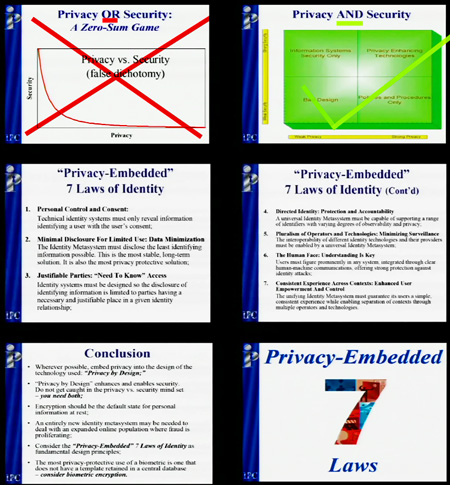Weeks ago I announced to publish an idea of how to measure “2.0″. Being at the frontier of science, technology and learning with my blog thetawelle now for several years, I repeatedly asked myself how can I measure “2.0″. Everywhere you can read about “Web 2.0″ since Tim O’Reilly coined this buzzword and later on – afaik – registered it as a trademark, when he realized, that it was the ultimate joker addressing everything new, unknown and totally hip tech-stuff in the cyberspace.
The Longtailed´ness is one of 5 important criteria for measuring if some service is 2.0. Following the motto “Little sheep give wool too” technological change introduced “The age of endless shelf-space”. The networked world created even for smallest demands niches big enough to create a market and to allow existence of a supplier for this demand.
The “Longtail” can easily be translated as “Little sheep give wool too” – but it should be added “…if you have enough of those little sheep”. Internet created a situation, where many people find a new space to meet each other. Also demand and supply increasingly meet each other more often on the net than anywhere else.
If millions of people travel the net, also millions of desires and niches pop up. Even the scariest or funniest or unimaginable ideas and requests will find more than one person on the net representing them. Niches are created everywhere through aggregation of those following these niche-subjects until the critical mass lets pop up a new internet-page -blog or -service for exactly this new niche.
Since the factors explained here should be clear catalysts of a dynamic of change and creation the longtailed’ness seems to be one of the most important factors among them. Longtailed’ness skyrockets because the costs of supply and demand meeting on the net decreased to nearly zero. Search-engines e.g. are one of the most important driving forces behind the creation of new niches, which might give birth to the next new web-service.
Sources of inspiration
- The Long Tail, Chris Anderson (blog) in an article for wired.com
- Endless shelf space (PDF), „Outlook“ Special Edition: The eSeries, Accenture
- A Paradise of Choice? – American Scientist/Sigma Xi, The Scientific Research Society
- Bekanntmachung des Bundesministeriums für Bildung und Forschung von Richtlinien zur Förderung von Vorhaben zur Weiterentwicklung und zum Einsatz von Web 2.0 Technologien in der beruflichen Qualifizierung – Federal Ministry of Education and Research, Germany (BMBF)
Update 15.7.2008
One of the best examples of how the longtail changes the way things work can be recognized in the path development of german music tv took. Since MTV, VIVA and others changed their program to ringtone-ads and us-funshows music as one of the main youth-media just changed over to the internet. The german magazine „Stern“ has now some really nice article „Musikfernsehen im Internet – Die Erben von Kavka und Kuttner“ about this and many interesting links which point far away along the tail. Some examples: c-tube, balcony TV, bunch TV and Motor TV are filling the gap of the missing link for music video fans now.
 Why do I blog this? Everywhere around me people were thinking about how the web might change their business. One of these „people“ was the library (SUUB) of Bremen. These people are searching for what to do and what to change to be successful. Also politicians think about how to support science and companies to develop new, persistent and successful web2.0 services. But no one of those I met, asked what the driving forces behind Web2.0 are. I will try to shed some light upon this question in this part and the remaining 3 plus 1 parts about measuring 2.0, and I hope for some insightful comments. I do not think that I have found the ONE and only truth here, but instead I try to stand on the shoulders of giants. Longtailed’ness seems to be a trivial part – which is why I chose to start with this one – but there are four other parts of the 4+1 in total waiting to revealed soon…
Why do I blog this? Everywhere around me people were thinking about how the web might change their business. One of these „people“ was the library (SUUB) of Bremen. These people are searching for what to do and what to change to be successful. Also politicians think about how to support science and companies to develop new, persistent and successful web2.0 services. But no one of those I met, asked what the driving forces behind Web2.0 are. I will try to shed some light upon this question in this part and the remaining 3 plus 1 parts about measuring 2.0, and I hope for some insightful comments. I do not think that I have found the ONE and only truth here, but instead I try to stand on the shoulders of giants. Longtailed’ness seems to be a trivial part – which is why I chose to start with this one – but there are four other parts of the 4+1 in total waiting to revealed soon…

 Today I payed very close attention towards a
Today I payed very close attention towards a 
 There’s some sexappeal in the concept of the „Wisdom of the Crowd“. It promises you only need to have enough people building a crowd to get a wise solution! But what kind of problems are fitting to this concept of problemsolving? Kathy Sierra has now thought about this in detail and put up a really thought provoking blogpost entitled
There’s some sexappeal in the concept of the „Wisdom of the Crowd“. It promises you only need to have enough people building a crowd to get a wise solution! But what kind of problems are fitting to this concept of problemsolving? Kathy Sierra has now thought about this in detail and put up a really thought provoking blogpost entitled  I think wisdom will appear, as soon as the unique efforts of every individual are summed up to complement something. So the wisdom is lying in the very individual effort. Dumbness will establish as soon as the unique effort will become meaningless by amplification or consenus. So, from my perspective it is amplification of the already known versus complementing the already known with a different approach in hope for „the best unique effort takes it all“-consensus.
I think wisdom will appear, as soon as the unique efforts of every individual are summed up to complement something. So the wisdom is lying in the very individual effort. Dumbness will establish as soon as the unique effort will become meaningless by amplification or consenus. So, from my perspective it is amplification of the already known versus complementing the already known with a different approach in hope for „the best unique effort takes it all“-consensus. If there is a family in a car leaving their home for a holliday trip, there is ONE person doing the steering of the car. The clasic wisdom of the crowds concept suggests that you should have FOUR drivers. but this would mean e.g. steering the car to the left to introduce some overtaking-maneuver and at the same time slowing the car down (because perhaps one person descides to cancel its opinion about overtaking). Driving a car using wisdom of the crowd seems to result in 100% chaos.
If there is a family in a car leaving their home for a holliday trip, there is ONE person doing the steering of the car. The clasic wisdom of the crowds concept suggests that you should have FOUR drivers. but this would mean e.g. steering the car to the left to introduce some overtaking-maneuver and at the same time slowing the car down (because perhaps one person descides to cancel its opinion about overtaking). Driving a car using wisdom of the crowd seems to result in 100% chaos. The naive „Wisdom of Crowds“ approach results in NO ONE taking responsibility for action. That’s why it will fail! It seems to be a different situation, if we have a crowd in search for direction, so an indifferent crowd for example. In a case where no efforts are made the slightest effort will be in the position of „the best unique effort takes it all“-consensus immediately. This is what we admire in social groups of animals (like ants) which operate in swarm structures. There the group/swarm steers itself as soon as some kind of „the best unique effort takes it all“-consensus is reached. Perhaps the basic effect which drives the socalled „Wisdom of Crowds“ is more some kind of „
The naive „Wisdom of Crowds“ approach results in NO ONE taking responsibility for action. That’s why it will fail! It seems to be a different situation, if we have a crowd in search for direction, so an indifferent crowd for example. In a case where no efforts are made the slightest effort will be in the position of „the best unique effort takes it all“-consensus immediately. This is what we admire in social groups of animals (like ants) which operate in swarm structures. There the group/swarm steers itself as soon as some kind of „the best unique effort takes it all“-consensus is reached. Perhaps the basic effect which drives the socalled „Wisdom of Crowds“ is more some kind of „